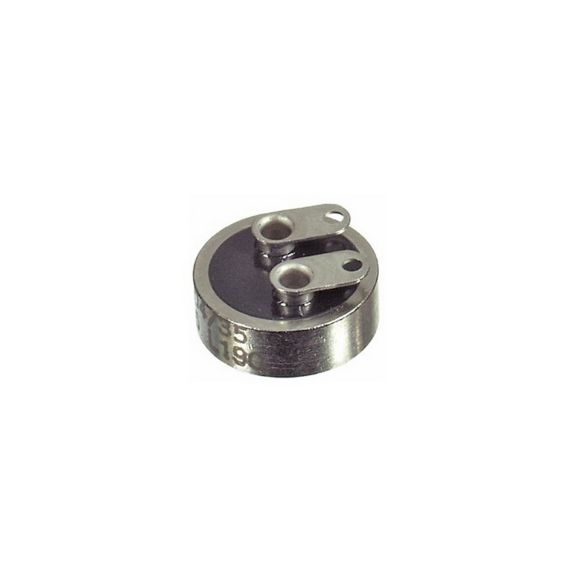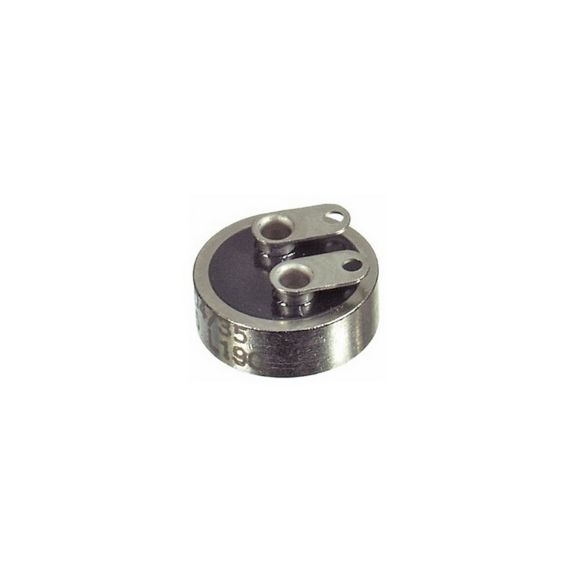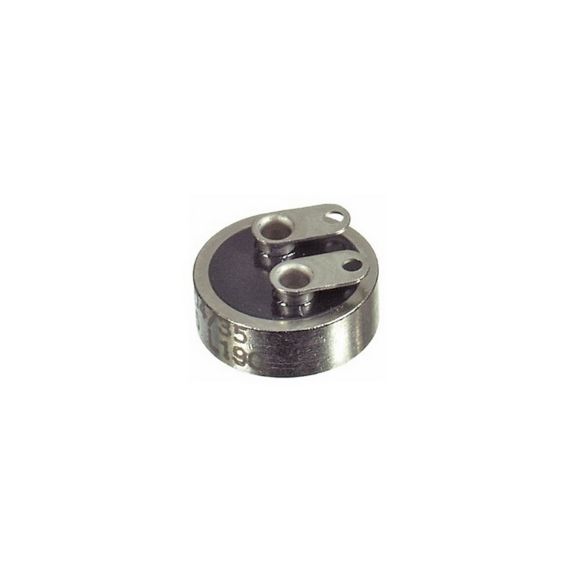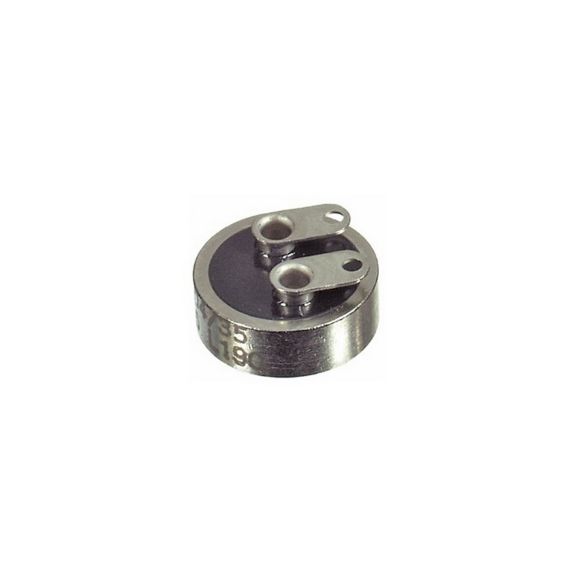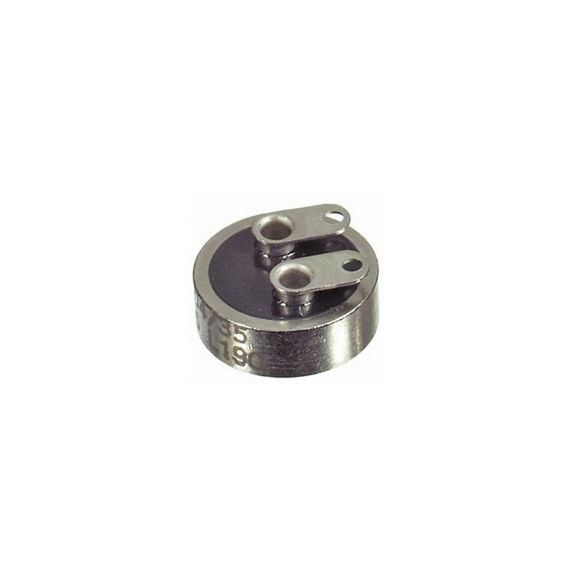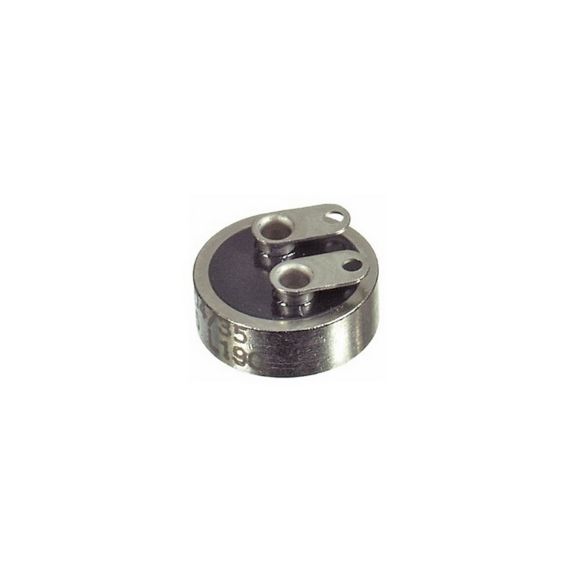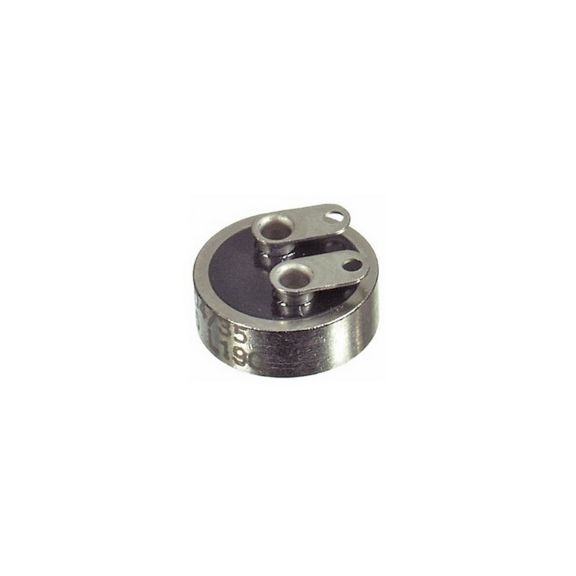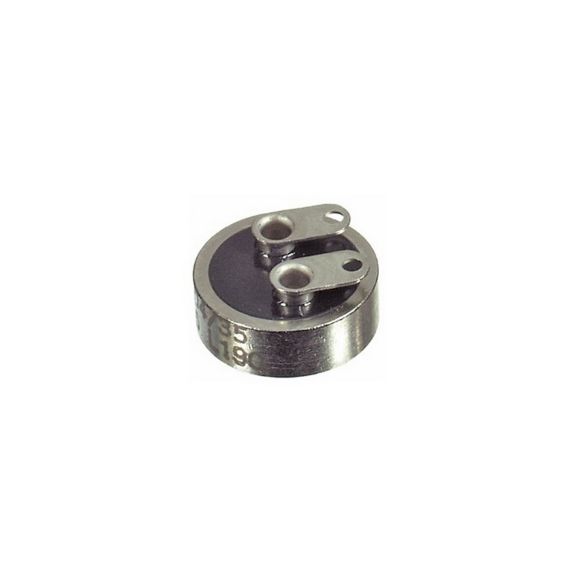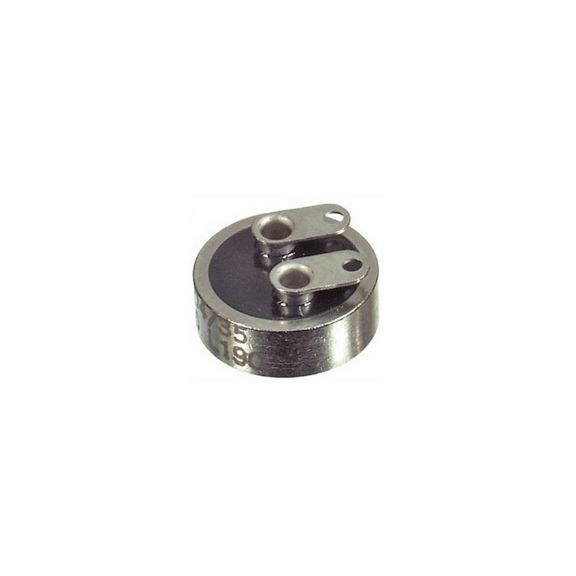Thermostats
3153 Series
Compact, low profile. Hermetically sealed. Tight tolerances & differentials. Pre-set & tamper proof. SPST contacts. Mounting brackets, terminals
Please sign in to access more documents
Once signed in, you may be able to access additional documents for your account.
The 3153 Series consists of a single pole, single throw switch activated by a snap action bimetal disc. Temperature calibrations are pre-set at the factory, and each unit is 100% thermally and mechanically inspected. It is available to open or close on temperature rise. The case is laser welded to form a hermetically sealed steel housing, with a glass-to-metal seal at the terminal junction. The low silhouette and compact design often make it especially well-suited for applications that require miniaturization. Acceptance testing is performed in accordance with MIL-S-24236, Table III.
Features
- Hermetically sealed
- Tight tolerances
- Tight differentials
- Hi-Rel
Potential Applications
- Military and commercial aircraft
Standards & Certifications
- Agency Approvals and Standards
- Acceptance testing performed in accordance to MIL-PRF-24236, Table III
Features
- Vibration
- MIL-STD-202, Method 204; 20 G
- Thermal Shock
- MIL-STD-202, Method 107; Cond. B
- Shock
- MIL-STD-202, Method 213; 100 G
- Seal Type
- MIL-STD-202, Method 112; Cond. C
- Salt Spray
- MIL-STD-202, Method 101; Cond. B
Technical Specifications
- Thermostat Environmental Exposure Range
- -65 °C to 260 °C [-85 °F to 500 °F]
- Thermostat Contact Resistance
- MIL-STD-202, Method 307; 0.050 Ohm max.
- Insulation Resistance
- MIL-STD-202, Method 302; 500 MOhm
- Dielectric Strength
- MIL-STD-202, Method 301; 1250 Vac 60 Hz - Terminal to Case
Operating Characteristics
- Operating Temperature
- -29 °C to 177 °C [-20 °F to 350 °F]
- Humidity
- MIL-STD-202, Method 106
Others
- Industry
- Aerospace
Standards & Certifications
- Agency Approvals and Standards
- Acceptance testing performed in accordance to MIL-PRF-24236, Table III
Features
- Vibration
- MIL-STD-202, Method 204; 20 G
- Thermal Shock
- MIL-STD-202, Method 107; Cond. B
- Shock
- MIL-STD-202, Method 213; 100 G
- Seal Type
- MIL-STD-202, Method 112; Cond. C
- Salt Spray
- MIL-STD-202, Method 101; Cond. B
Technical Specifications
- Thermostat Environmental Exposure Range
- -65 °C to 260 °C [-85 °F to 500 °F]
- Thermostat Contact Resistance
- MIL-STD-202, Method 307; 0.050 Ohm max.
- Insulation Resistance
- MIL-STD-202, Method 302; 500 MOhm
- Dielectric Strength
- MIL-STD-202, Method 301; 1250 Vac 60 Hz - Terminal to Case
Operating Characteristics
- Operating Temperature
- -29 °C to 177 °C [-20 °F to 350 °F]
- Humidity
- MIL-STD-202, Method 106
Others
- Industry
- Aerospace
- Agency Approvals and Standards : Acceptance testing performed in accordance to MIL-PRF-24236, Table III
- Vibration : MIL-STD-202, Method 204; 20 G
- Thermostat Environmental Exposure Range : -65 °C to 260 °C [-85 °F to 500 °F]
- Thermostat Contact Resistance : MIL-STD-202, Method 307; 0.050 Ohm max.
- Thermal Shock : MIL-STD-202, Method 107; Cond. B
- Shock : MIL-STD-202, Method 213; 100 G
- Seal Type : MIL-STD-202, Method 112; Cond. C
- Salt Spray : MIL-STD-202, Method 101; Cond. B
- Operating Temperature : -29 °C to 177 °C [-20 °F to 350 °F]
- Insulation Resistance : MIL-STD-202, Method 302; 500 MOhm
- Industry : Aerospace
- Humidity : MIL-STD-202, Method 106
- Dielectric Strength : MIL-STD-202, Method 301; 1250 Vac 60 Hz - Terminal to Case
Data Sheet
Manuals and Guides
Brochure
Technical Note
Application Note
eBook
Please sign in to view part numbers available for purchase based on your account Sign In

